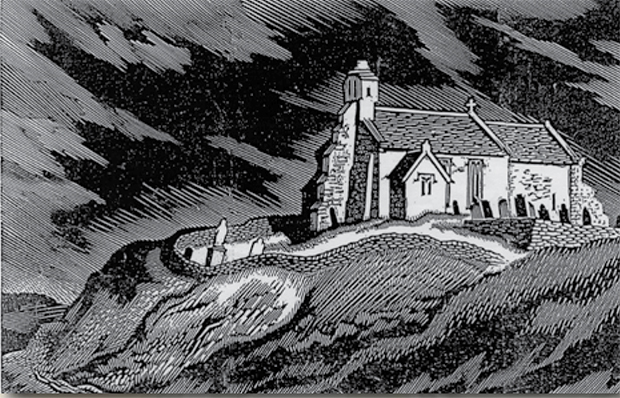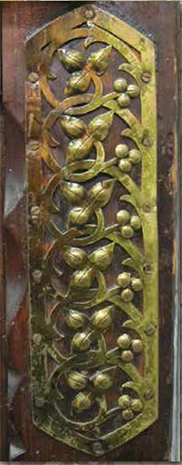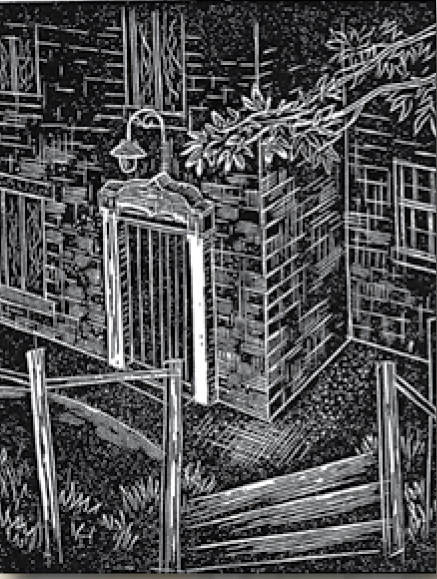The Arts Scene
The Art Group
Bensham Grove became an Educational Settlement in 1919 upon the death of Elizabeth Spence Watson. A new hierarchy was in charge. The country was reeling from the effects of the First World War, unemployment was taking a stranglehold on industrial Tyneside, and Quaker conscience that had held sway at Bensham Grove during the lifetime of three generations of the Watson family intensified and strengthened with the arrival of Miss Lettice Jowett and a new group of residents.
However, due to lack of serious funds, the house, with all its artistic features, stayed relatively the same. New ideas abounded, but the stained glass, tiles, fireplaces and craft work remained acting as a vibrant background to the work of the Settlement.
The Settlement became not only a catalyst for new social concerns, but provided a home for music and singing groups. An orchestra flourished, drama groups rehearsed, and exhibitions for hobbies and handicrafts were regularly held.
1930 brought a new visitor to the centre. Clifford Webb was to become a founder member of the Society of Wood Engravers and prominent amongst artists who brought about a revival of wood engraving. During his stay he founded the Bensham Settlement Art Group.

In 1934 the group had a new tutor. Mr Robert Lyon, who was to achieve notoriety as the tutor who also taught the Ashington Miner’s Art Group, travelling between the two venues on behalf of the WEA, inspiring oil painting, lino-cutting and, in the case of Bensham Grove, murals.
Records show that during Mr Lyon’s teaching the Art group covered the walls at Bensham Grove in murals painted in distemper and tempura. During the restoration of the house hope was high that some of these painting would have survived under wallpaper. Unfortunately only one partial piece of work emerged. A rather masculine-looking arm rising towards a pretty swallow or bluebird. The group kept up a strong relationship with the Ashington miners who held their very first exhibition at Bensham Grove before it removed to London. During the rest of the decade the Settlement played host to artists such as Muirhead Bone, James Boswell and Pearl Binder.
The art group disbanded on the eve of the Second World War.
Metalwork
 The silversmith volunteers studied the only original piece of door furniture remaining in the house and immediately began producing beautiful intricate designs, researching the period’s craft work. Artists of the time rejected the new factory produced goods preferring their own hand-crafted work.
The silversmith volunteers studied the only original piece of door furniture remaining in the house and immediately began producing beautiful intricate designs, researching the period’s craft work. Artists of the time rejected the new factory produced goods preferring their own hand-crafted work.
No artist has yet been attributed to the remaining work on the door at Bensham Grove but the volunteers have produced detailed and exciting designs in copper in the style of the period.
Present-day Restoration
In 2013, the Trustees of Bensham Grove were awarded funding from the Heritage Lottery Fund to restore the very faded grandeur of the main rooms, bringing into the fore a large and dedicated group of willing volunteers. Fund- raising, stained glass, needlework, pottery and metal-work all came together during the restoration.
Stained Glass
Volunteers from the stained glass groups have drawn inspiration from designs already in the house and garden. A mixture of creative images will adorn the plain glass in the conservatory and other places in the house. Wonderful colour and exciting designs will echo the existing period panels.
Pottery
Although little is known about the conservatory in the Spence Watson’s era inspiration has been drawn from others of the same period. The Pottery volunteers will produce tiles for the floor using knowledge of the life of the family. Robert’s visit to Morocco, being one of the first Europeans to enter the Holy City in disguise conjures up the rich colours of Moorish court-yards which will compliment the sunlit stained glass windows.
Embroidery
A home is not a home without fabrics used in curtains, cushions and upholstery. The needlework volunteers will take inspiration from the embroidery and design work of William Morris. Curtains, carefully chosen to enhance the period wallpapers will have borders and ties in the style of the Arts and Crafts period. Cushions and chair covers will be in Morris fabrics adding to the ambience of the different rooms.



